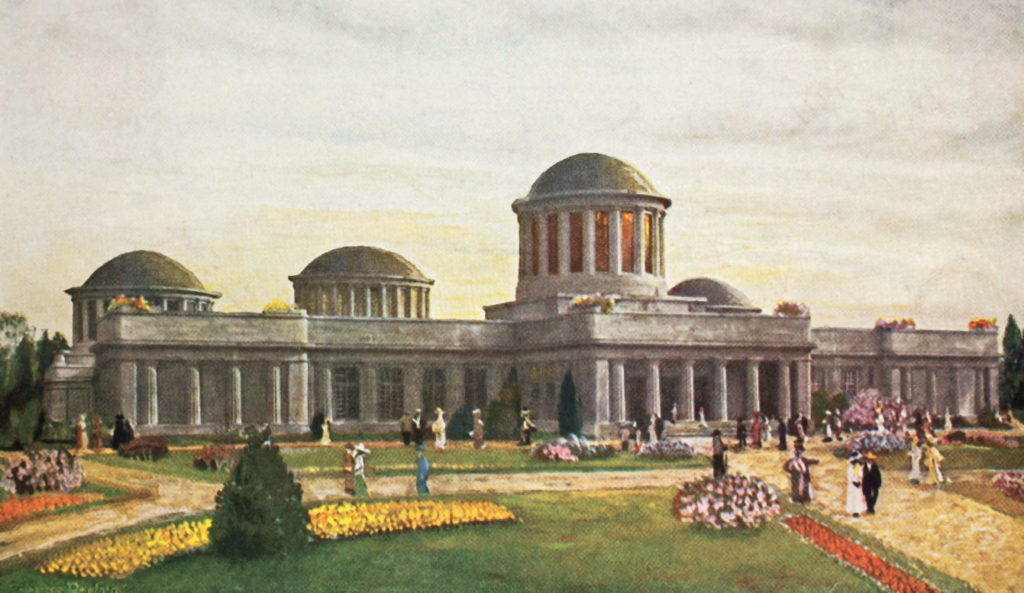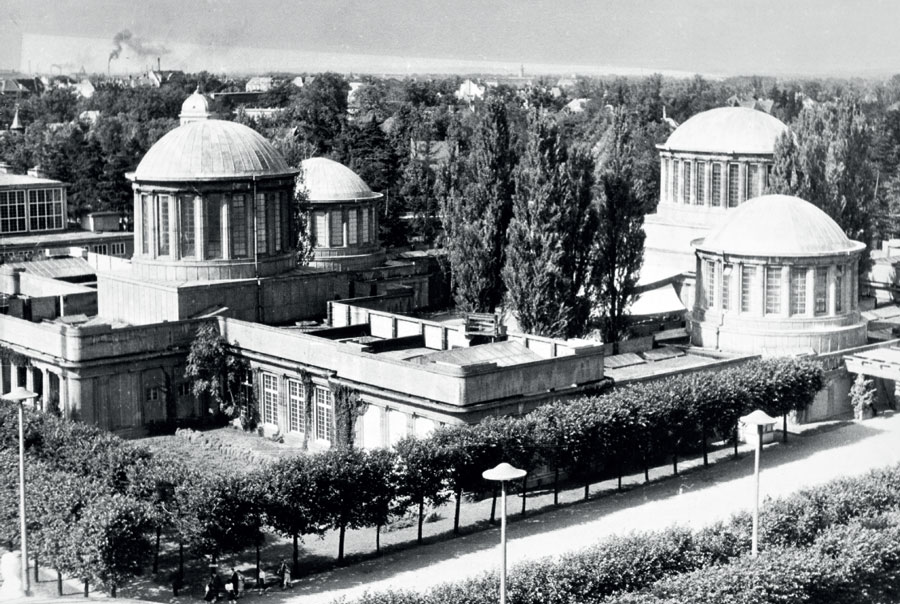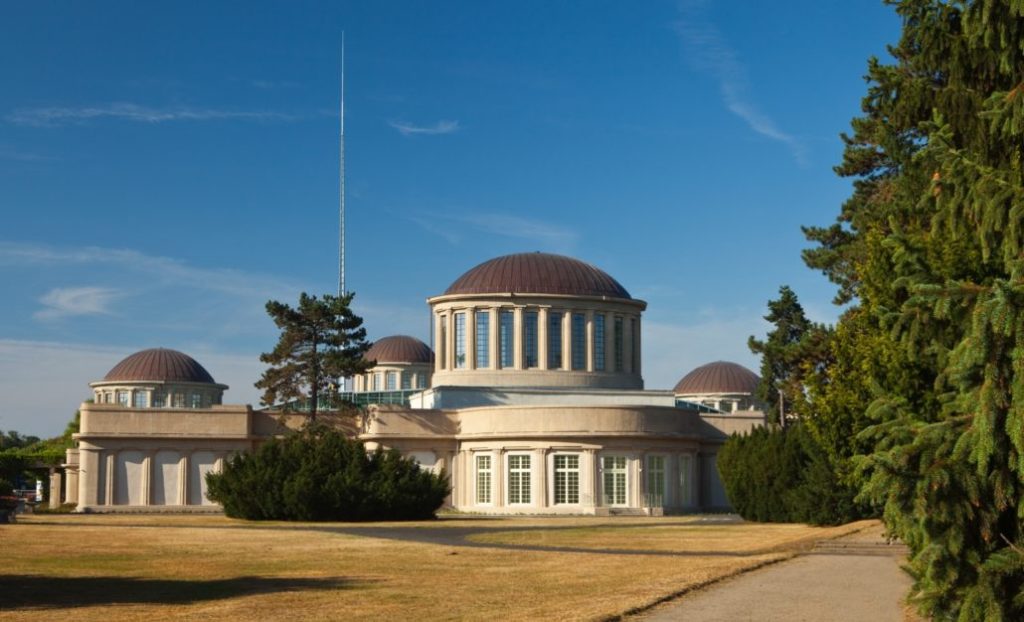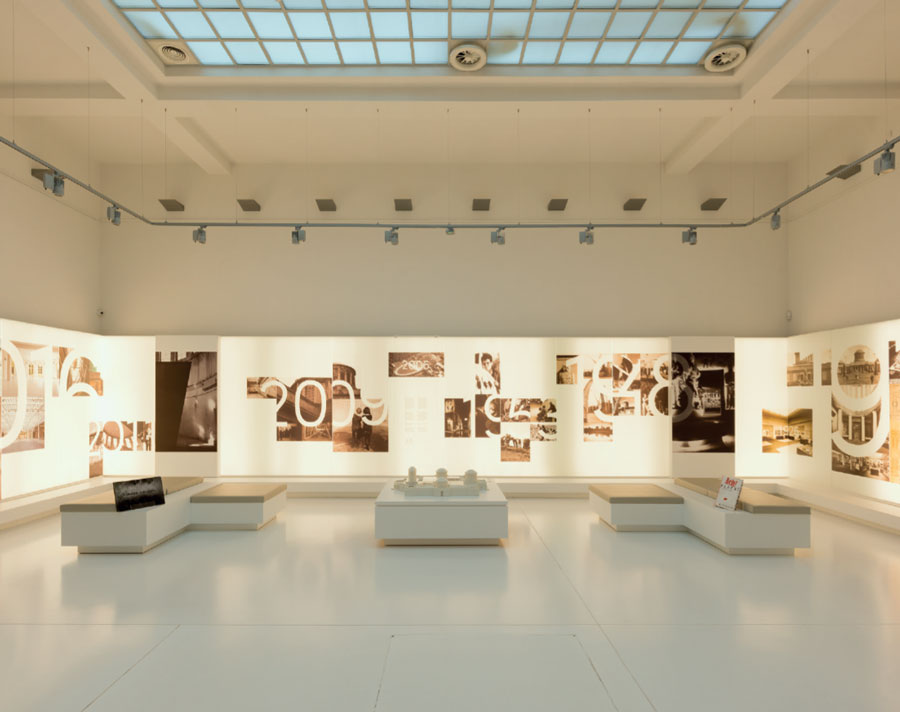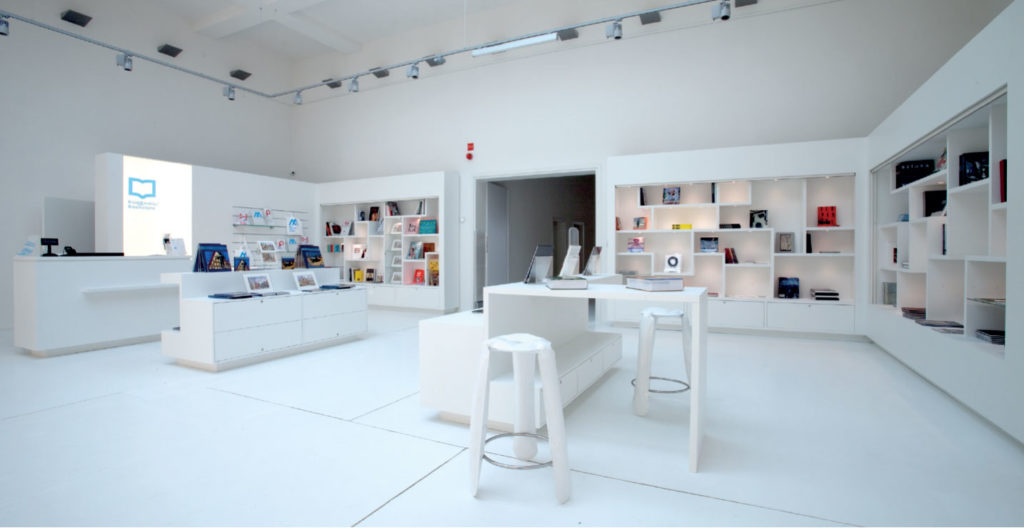On 25 June 2016 The Four Domes Pavilion, a modernist building designed by the distinguished architect Hanz Poelzig and erected in 1912, became the seat of the Museum of Contemporary Art, a branch of the National Museum in Wrocław.
This building, and the nearby Centennial Hall designed by Max Berg, are the two architectural elements dominating the so-called Exhibition Grounds. This unique urbanistic complex was created for the purposes of the Historical Exhibition organized in Wrocław in 1913 to mark the hundredth anniversary of the famous appeal issued by the King of Prussia Frederick Wilhelm III to his nation, An mein Volk, and of the Prussian victory over Napoleon in the Battle of Leipzig.
Up to 1945 the building housed temporary exhibitions of art and special celebrations. In 1948 it served as one of the locations during the famous Exibition of the Recovered Territories whose symbol was the ‘Needle’, a spire designed by Stanisław Hempel, originally 106m high and erected opposite the Pavilion’s entrance.
Starting from 1953 the Four Domes Pavilion was home of the Wrocław film studios, where several excellent Polish films were made, among them The Saragossa Manuscript by Wojciech Jerzy Has, Ash and Diamond by Andrzej Wajda, and the series of cult comedies by Sylwester Chęciński. Unfortunately, as if echoing the years of sad decline in film production, the building itself also fell into disrepair.
In 2009 the Pavilion became the seat of the National Museum in Wrocław and, thoroughly restored in 2013–2015, has regained its function as an exhibition space.
Hans Poelzig designed the building on a square plan, crowned with four symmetrically spaced domes, with an internal courtyard and made use of the most modern contemporary building technologies, among them the concrete frame structure. The unique character and atmosphere of the Pavilion’s interior is partly due to the modern way of using skylight windows, additional source of light flooding the interior with diffused daylight. The architectural form recalls Greek antiquity, the effect achieved by Poelzig with Doric pseudo-pillars placed in the façade and the motif of meander decorating the vaulted ceiling of the northern dome.
